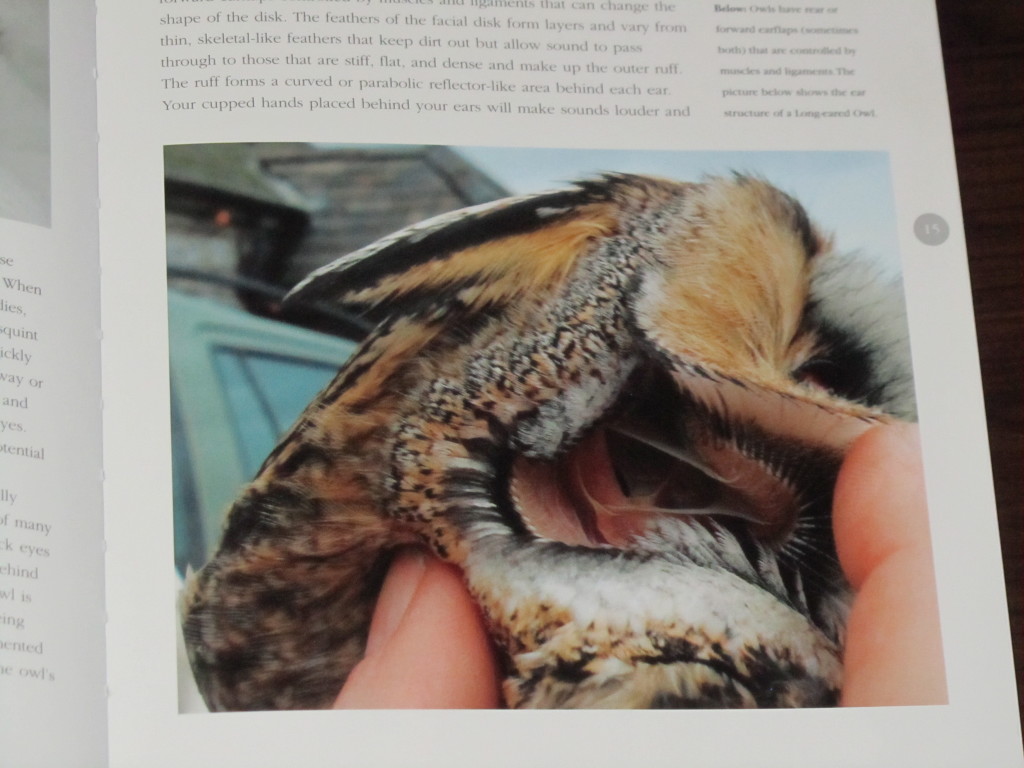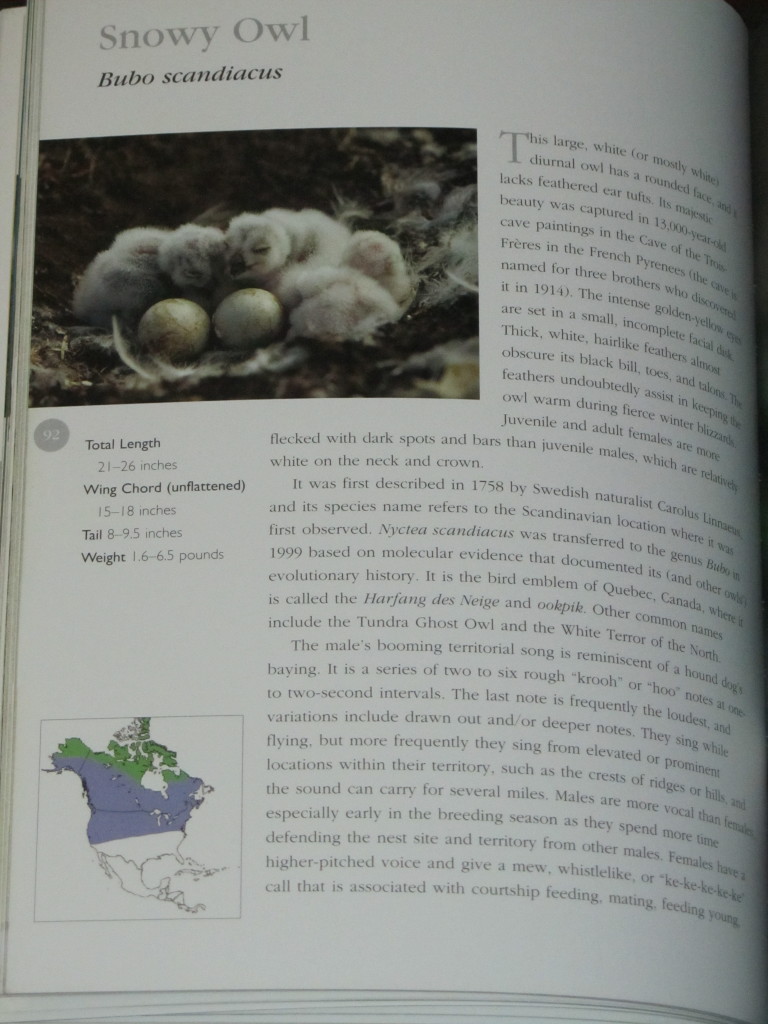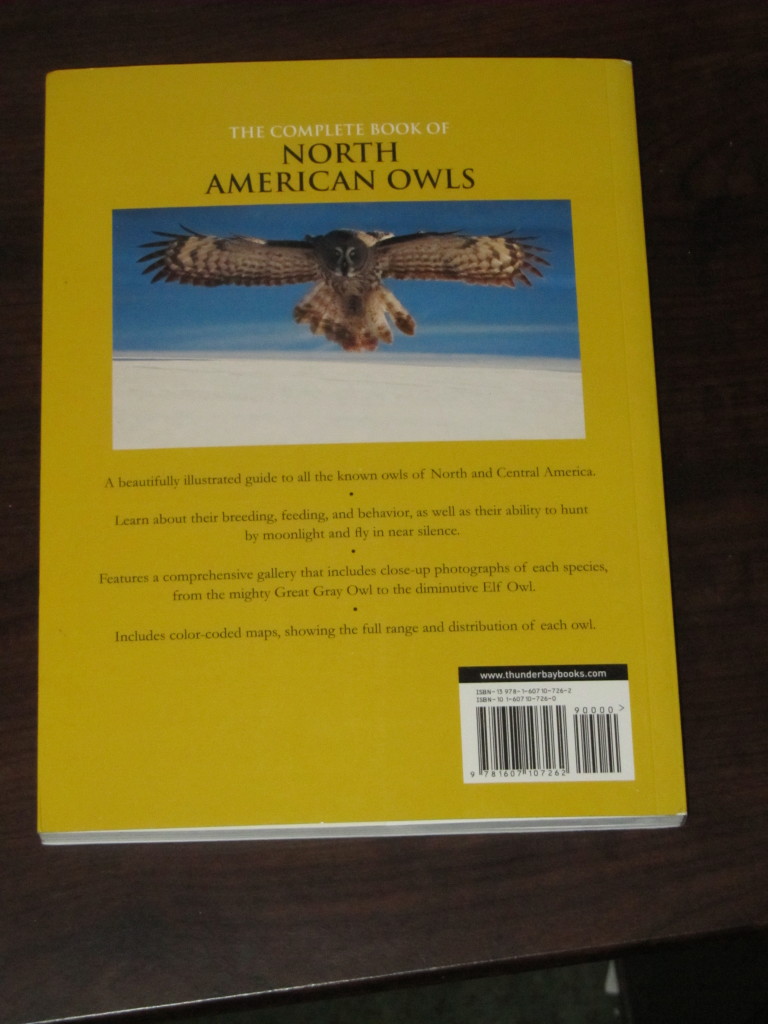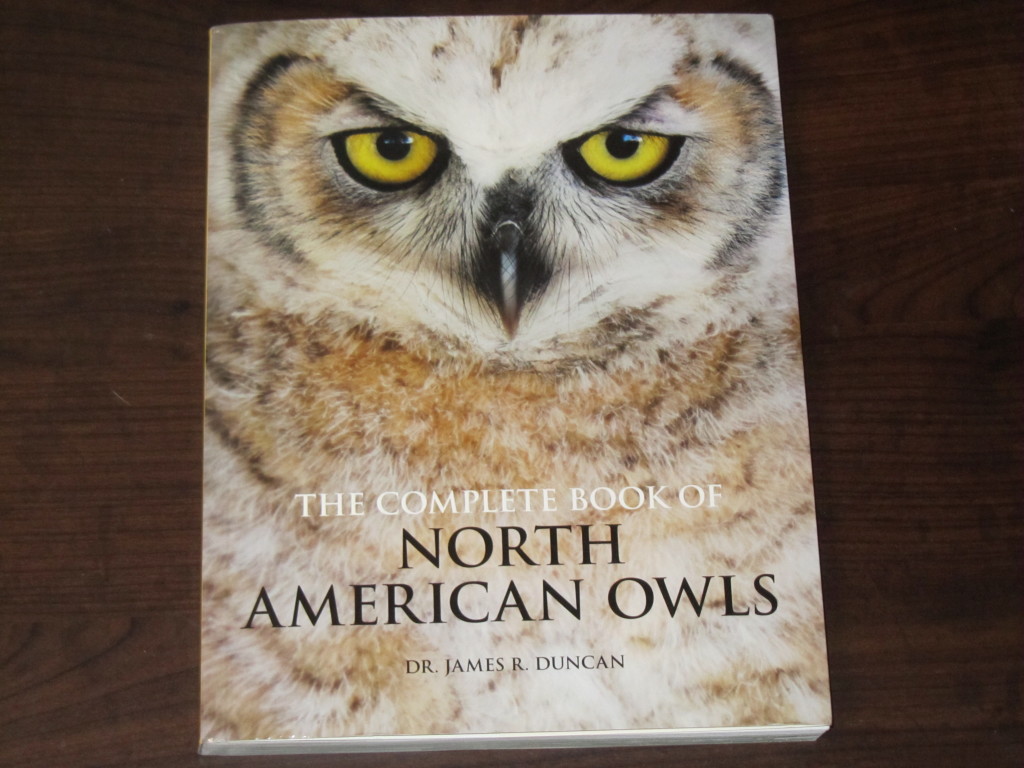“Owls are fascinating to us because they are simultaneously foreign and familiar.” So states Dr. James R. Duncan on page 6 of his book The Complete Book of North American Owls. He goes on to explain the biology and unusual features of North American Owls. Further into the book, he has a complete profile of every known species of Owl in North America. The result is an all round excellent guide which is essential to any Owling expedition, whether diurnal or nocturnal.
The introduction is informative, but manages to convey its large amount of information in an interesting way. Mainly on the biology and ‘special adaptations’ of owls, this document starts off with captivating sentences that show the relationships between owls and humans. On page 6, he states it well and plainly. “When owls and humans meet, it is sometimes hard to know which is more fascinated, startled, and sometimes even frightened.” Once he has the reader in his grasp, he progresses to the more scientific parts. He explains the intricate mysteries of owls and their amazing arsenal of survival skills. This entirety is built upon the excellent images that are not simply pictures of owls, but relevant and comprehension-aiding parts of the book.
This brings me to my next point: photography.
The photos are all clear, and have the proper photo credits. The more common species have multiple photos, at least one of both adult and immature, while the lesser known species may have only one or two. The photo choices and placement fits and does not get in the way, but helps with understanding the species. I did, however, notice one slight error: the front page photos from the Northern Pygmy Owl and the Mountain Pygmy Owl had been swapped! Apart from this, everything was exceptional for all the pictures.
Most owl species in the book have 1 to 4 pages of detailed descriptions and photos. On each owl’s front page, the Owl’s common and Latin names are top of the sheet, precise range maps and a general physical summarization lie beside the text. In the writing itself, the primary information is the song, range, food, and nesting. Behaviour and nesting habits are also mentioned. I found that the author tried to insert some interesting little pieces of info that may not help with identification, but are interesting nonetheless, including quotes such as this: “It [the Northern Hawk Owl] roosts within forested stands at night, and has been seen flying for such cover from open areas when Great-horned Owls emerge at dusk to start hunting.” (page 128).
The book is well organised, a 25cm tall, 19cm wide, 2cm thick volume, the font is easy to read and a reasonable size. It is not so much a field guide as a home guide, in my opinion, meaning that I would keep it at home and read it there rather than take it into the field (although if you’re going owling, take it when you can, it would be very useful).
To conclude, the pictures are good, the writing is very informative, and you can tell that the author has made an effort to keep it interesting. All in all, Dr. James R. Duncan has succeeded in making one of the best and most influential owl guides that I have ever read.

I am always so impressed by your writing skills! Your book review is exceptional: concise, yet captures our interest in the subject, leaving us wanting to know more about owls by purchasing the guide. Merci de partager!
Thanks!
It sounds cool. I haven’t read it, but I will see if my library has it.
Excellent review! And thanks for letting me re-post it.
Thank you!
Sounds like a good book! I just got a book today called ‘The Parrot Without a Name: The Search for the Last Unknown Birds on Earth’. Have you read it or heard of it? I haven’t read it yet.